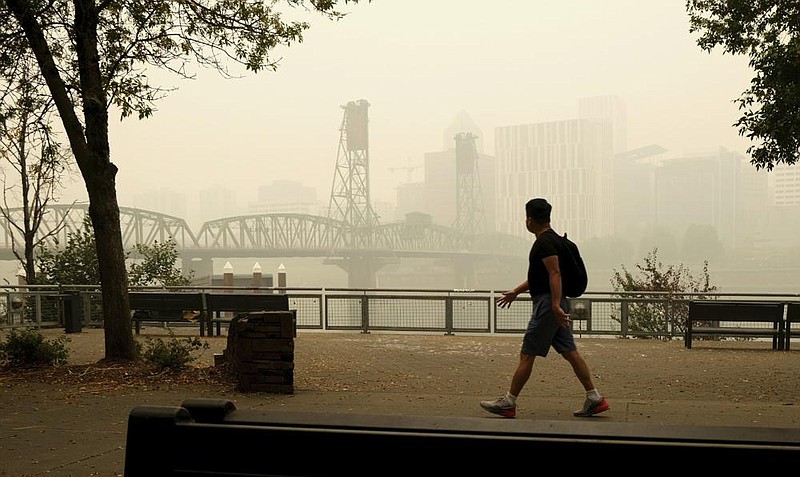The prospect of scattered rain in the Pacific Northwest raised hopes for better firefighting conditions in Washington and Oregon on Wednesday, after weeks of oppressive heat, hazardous air and unpredictable fires that have raged up and down the coast.
Although the storm system was not forecast to be significant, the possibility of rain clouds in coastal regions -- instead of smoke plumes and falling ash -- was a lifeline for residents after weeks of increasingly grim news. More than 30 people have died in wildfires in the past two months, hundreds of homes have been destroyed and thousands of people remain in evacuation shelters.
With millions of acres across the West blackened by fire, the effect on humans has been clear: Lives lost, tens of thousands of people forced to flee their homes, possessions and livelihoods destroyed, and state and federal firefighting resources have been stretched beyond the limit.
Residents are even beginning to question whether the changing fire danger will make their hometowns too dangerous to inhabit. Less obvious is the long-term effects to native species.
Wildlife officials all over the West are grappling with how to respond now that habitats set aside for threatened species appear to be imperiled by large wildfires.
[Video not showing up above? Click here to view » https://www.youtube.com/watch?v=1oj_iMLDHDY]
Fire that raced through the sagebrush steppe country of central Washington this month destroyed several state wildlife areas, leaving little more than bare ground. The flames killed about half of the state's endangered population of pygmy rabbits, leaving only about 50 of the palm-size rabbits in the wild there.
The fires also destroyed critical breeding grounds for endangered sage grouse and sharp-tailed grouse, and officials estimate the fast-moving flames may have wiped out 30% to 70% of the birds. The survivors are left without the critical brush cover they need to raise young.
Inland and to the south, the weather forecast was less encouraging. Parts of central Oregon were expecting gusts up to 35 mph Wednesday afternoon that could contribute to a "significant spread" of new and existing fires, the National Weather Service in Medford, Ore., said. Up to 29 fires were active in the state Wednesday, spread over more than 843,500 acres.
And in California, there was not even temporary relief in sight, with the state fire agency saying Tuesday, "With no significant precipitation in sight, California remains dry and ripe for wildfires." State leaders, facing not just this wildfire season, spoke about the need to face an indefinite future of fires worsened by climate change.
"Firefighters themselves, with decades of experience, are telling me that they've never seen fires like this before because of the extreme aridity combined with wind," Gov. Jay Inslee of Washington state said at a news conference Tuesday.
As of early Wednesday, there were at least 25 major wildfires and fire complexes, the term given to several fires in a single geographic area, burning in California, Christine McMorrow of the California fire and forestry agency said.
[Gallery not loading above? Click here for more photos » arkansasonline.com/917fires/]
More than 2.8 million acres have either burned since Aug. 15 or are on fire now, she said.
Late Tuesday, emergency officials reported progress on some of the biggest fires around the region. The growth of the Beachie Creek fire, which has burned more than 190,000 acres east of Salem, Ore., had slowed, and the fire was 20% contained as of Wednesday morning. The August Complex fire, which has burned almost 800,000 acres north of Sacramento, was 30% contained, and the 220,000-acre North Complex fire, to its east, was 18% contained.
Inslee said that Washington state was now in position to help its neighbors, if in a small way, by providing some of its resources to Oregon.
"We're confident right now that we have enough personnel and equipment to protect our communities," he said.


